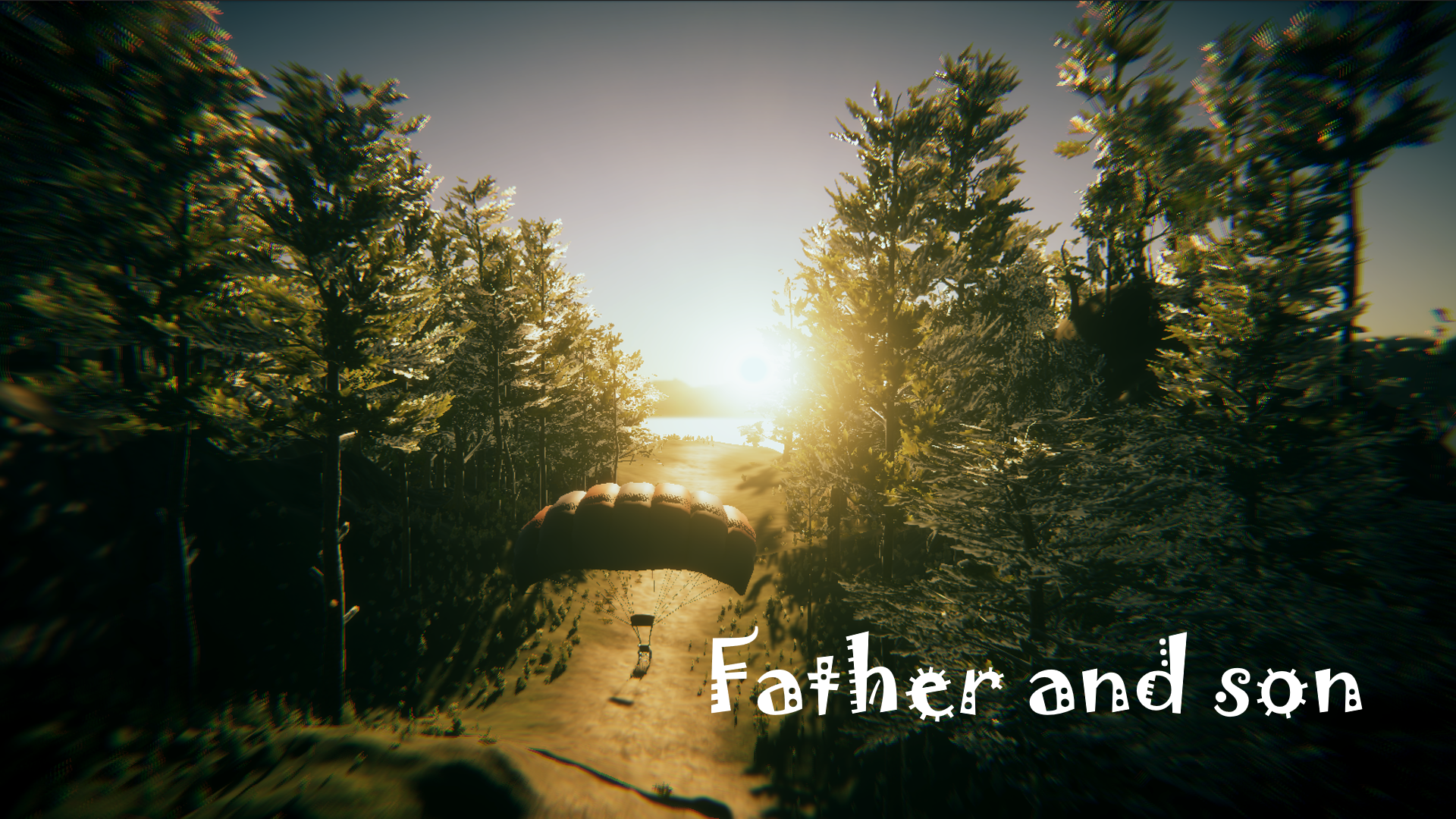
This is a VR indie game classified as a puzzle game called Father and Son
You will play the role of a teenager Xia Yu in a wheelchair in virtual reality.
After an accident, you lose your legs. After nearly half a year of recovery, you returned to your hometown, a front room next to the hardware grocery store, but at that moment your father left without saying goodbye.
You are free to explore at home, interact with scenes and objects that can be seen everywhere, understand the story between Xia Yu and his father, and explore why his father left home.
Platform | VR | Oculus Quest 2
Date | 2021
Tools | Unity - Maya - SubstancePainter - PhotoShop - AdobeIllustrator
Entry Result | Top45 - Round 2
Responsibilities
· Developed flying gameplay based on unity, designed and defined gameplay trigger mechanisms and conditions.
· Created stylized mapping for models using substance series software.
· Adjusted and optimized the model to ensure its suitability and integrity.
· Worked closely with game designers to discuss gameplay design and design details.
· Also responsible for part of the documentation work.
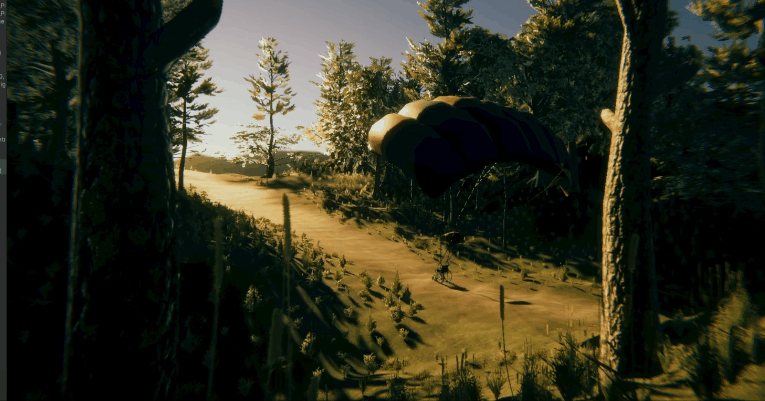
Purpose of Game Design
PROJECT
We combine virtual reality with a gameplay of “walking simulator.”
Using the current Virtual Reality Equipment (head-mounted display and the handles),
we decided to create a more interactive gameplay and a more immersive narrative experience in our game.
VALUES
Help players experience the lives of disabled people in the game. The game not only brings players fascinating interactive gameplay, realistic virtual worlds, and moving storylines but also allows them to think about the relationship between the disabled and individuals, families, and the whole society after the game.
EXPERIENCE
1 Experience the feeling that the disabled can only use both hands to examine the wheelchair and control the movement
2 Experience the feeling of moving freely in a more spacious area naturally in virtual reality environment
3 Players can grasp and pull the objects and do other hand interactions, which may satisfy their curiosity
4 Designed assembling gameplay according to basic “hand-object interaction” to make simple interaction more interesting
5 Exploration and adventure help players discover details in the story
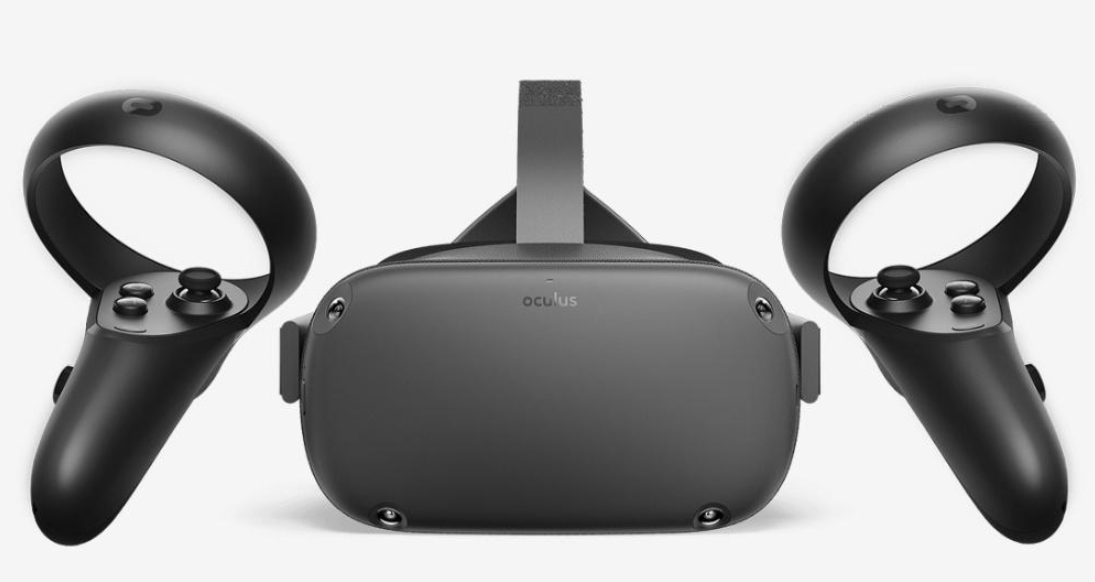
Operation
Wear a VR headset
Hold the handle
Interact with objects in the scene
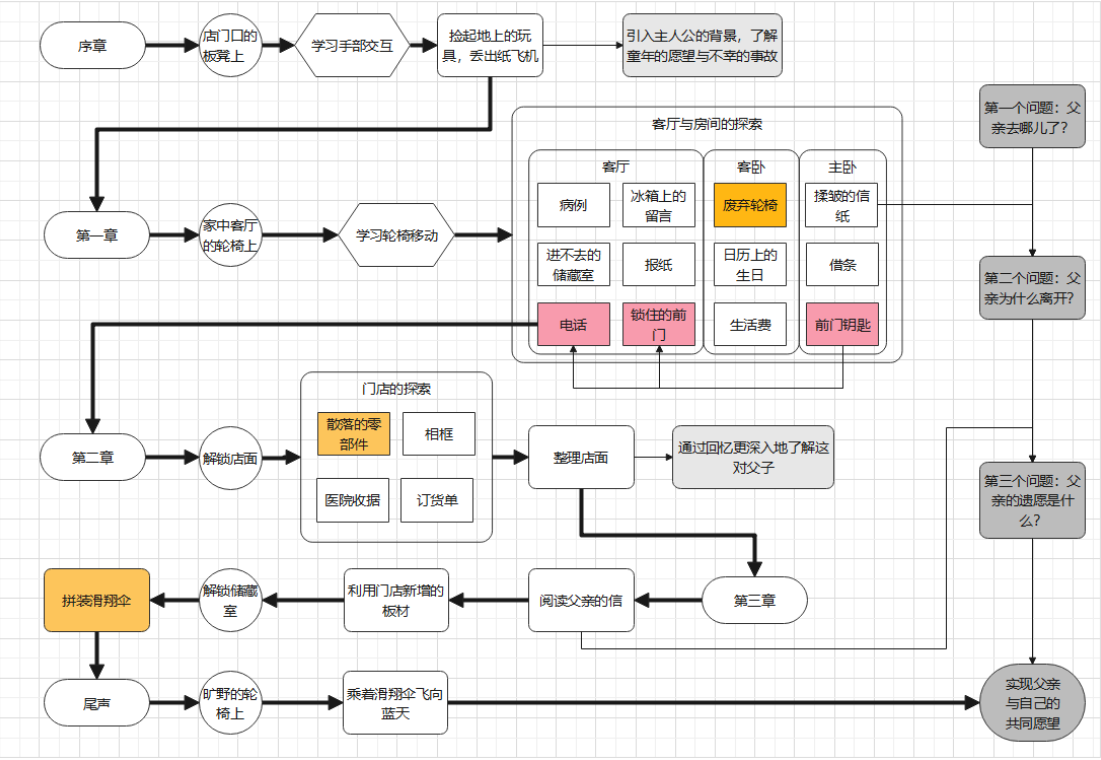
Game Experience Process
WHY we choose Virtual Reality?
&
HOW we design?
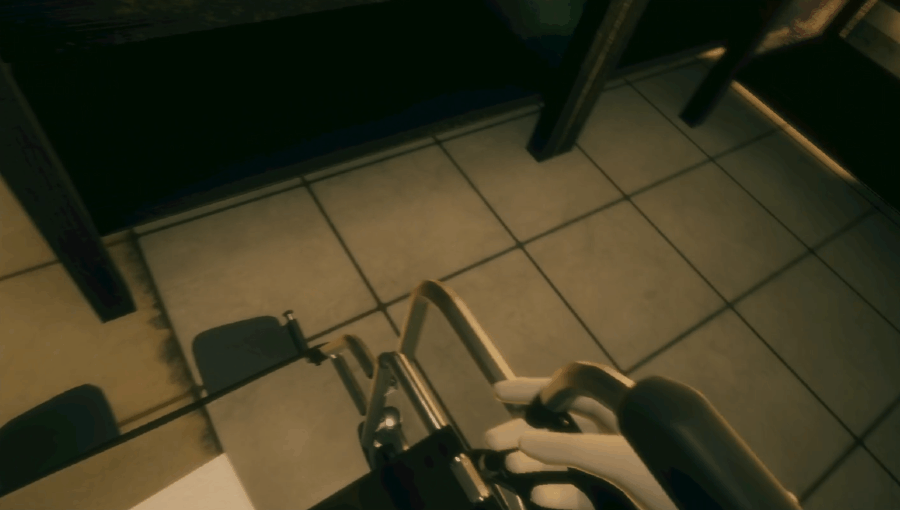
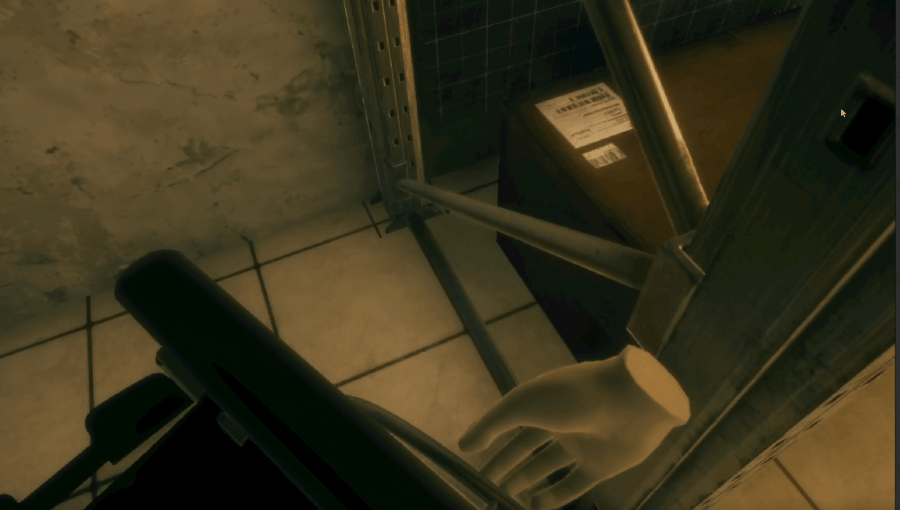
Wheelchair Locomotion
In virtual reality games, movement is always limited to a small physical play space, which is a considerable limitation for designers to construct a highly immersive virtual world. Therefore, they have developed two types of solutions: non-real mobile input and restrictions on virtual space, which are not natural or free, respectively. In this game, we introduced the core element of the wheelchair and proposed our innovative solution: input the movement of the hand through the handle and simulate the direction of the wheelchair in the virtual reality world. This can be used in a more extensive range of virtual worlds and can complete the input of instructions truly and naturally.
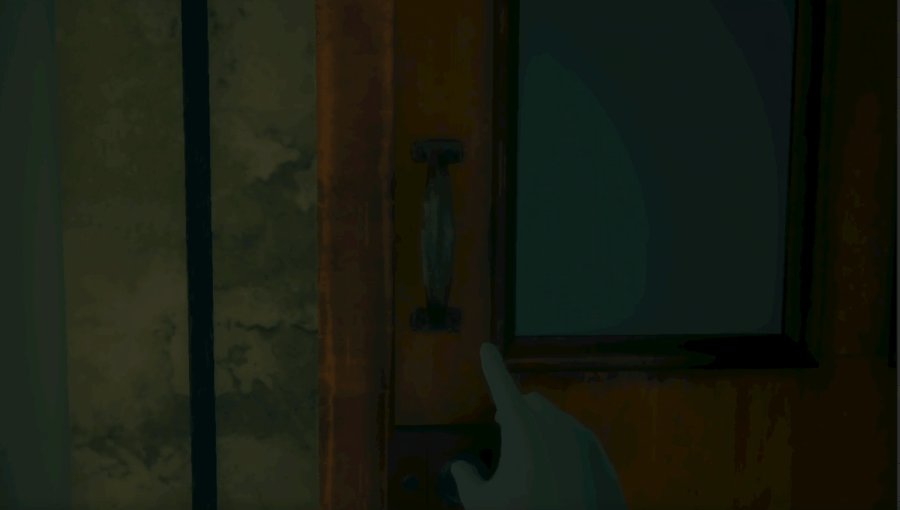
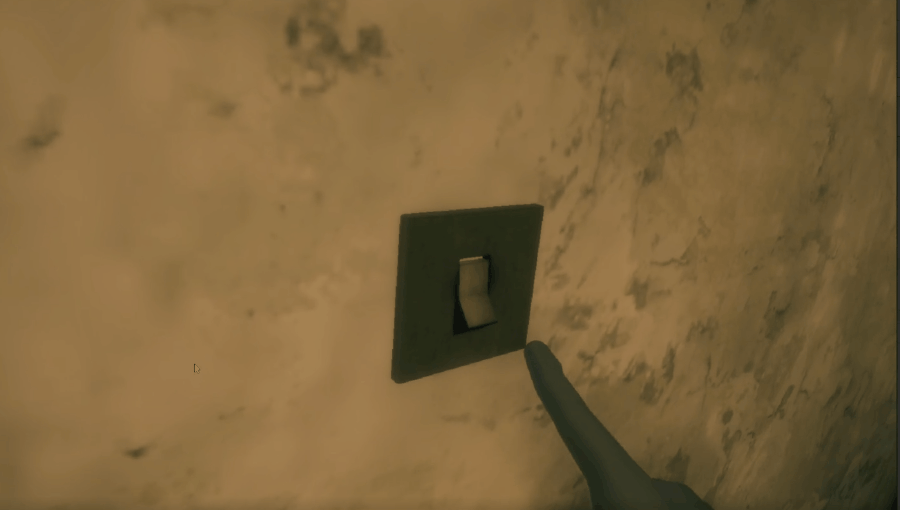
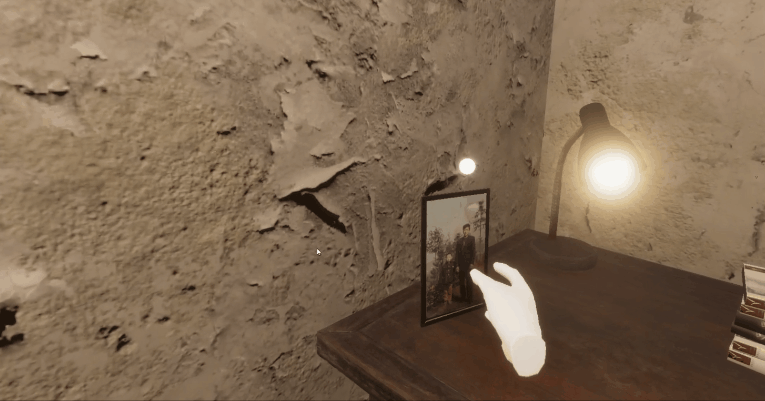
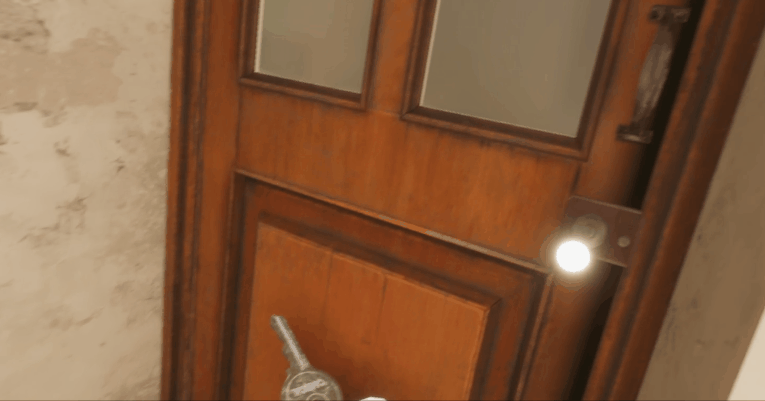
Interaction
The player can also interact with many objects in the scene. There are a large number of daily necessities for the player to pick up and view: photo frames, letters, toys, books, etc. At the same time, we designed unique interactive gameplay for essential items in the game, such as taking apart the photo frame to find the other half of the photo. The player can interact with objects freely within reach in the game, which will primarily increase the immersion and fun of the player while playing. The player can also pick up things and move them with him/her.
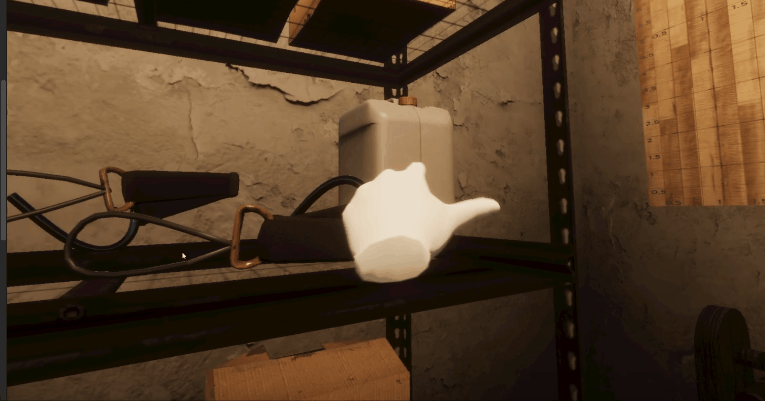
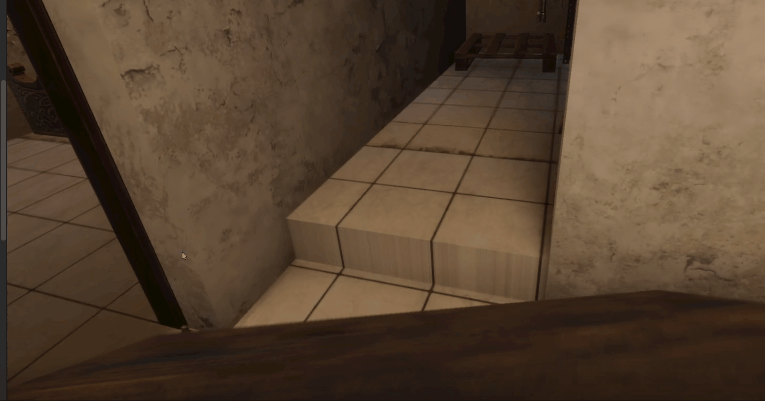
Assembling
For certain specific items, such as utensils with missing parts and semi-finished products corresponding to drawings, players can pick up the missing items with their hands and place them in the appropriate positions to complete the assembly, thereby promoting the further development of the plot. The player may be filled with fun and a sense of accomplishment in the assembling process.
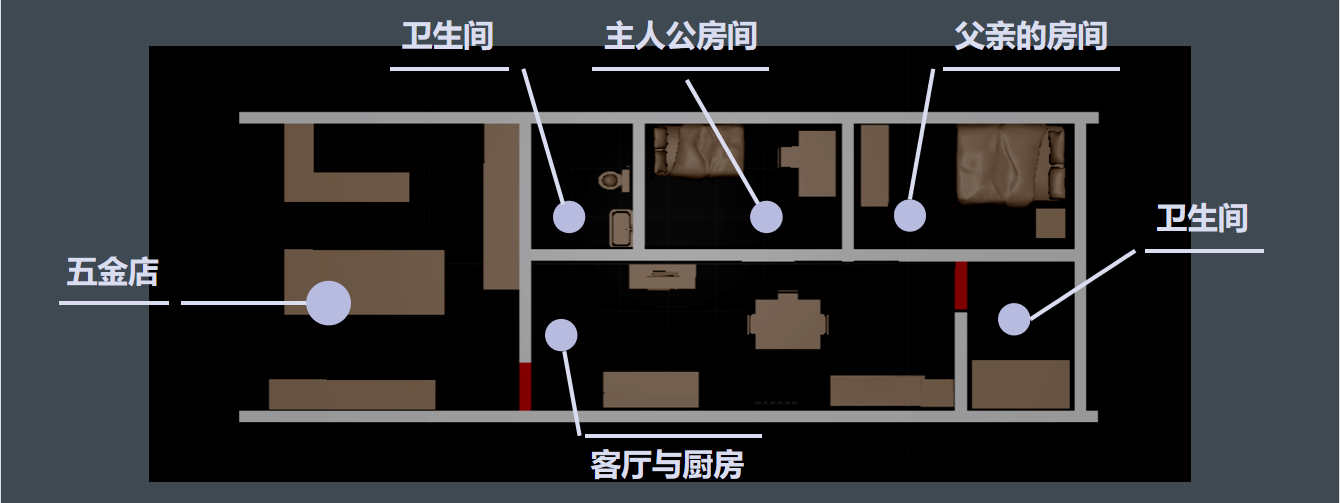
Level Design - Map
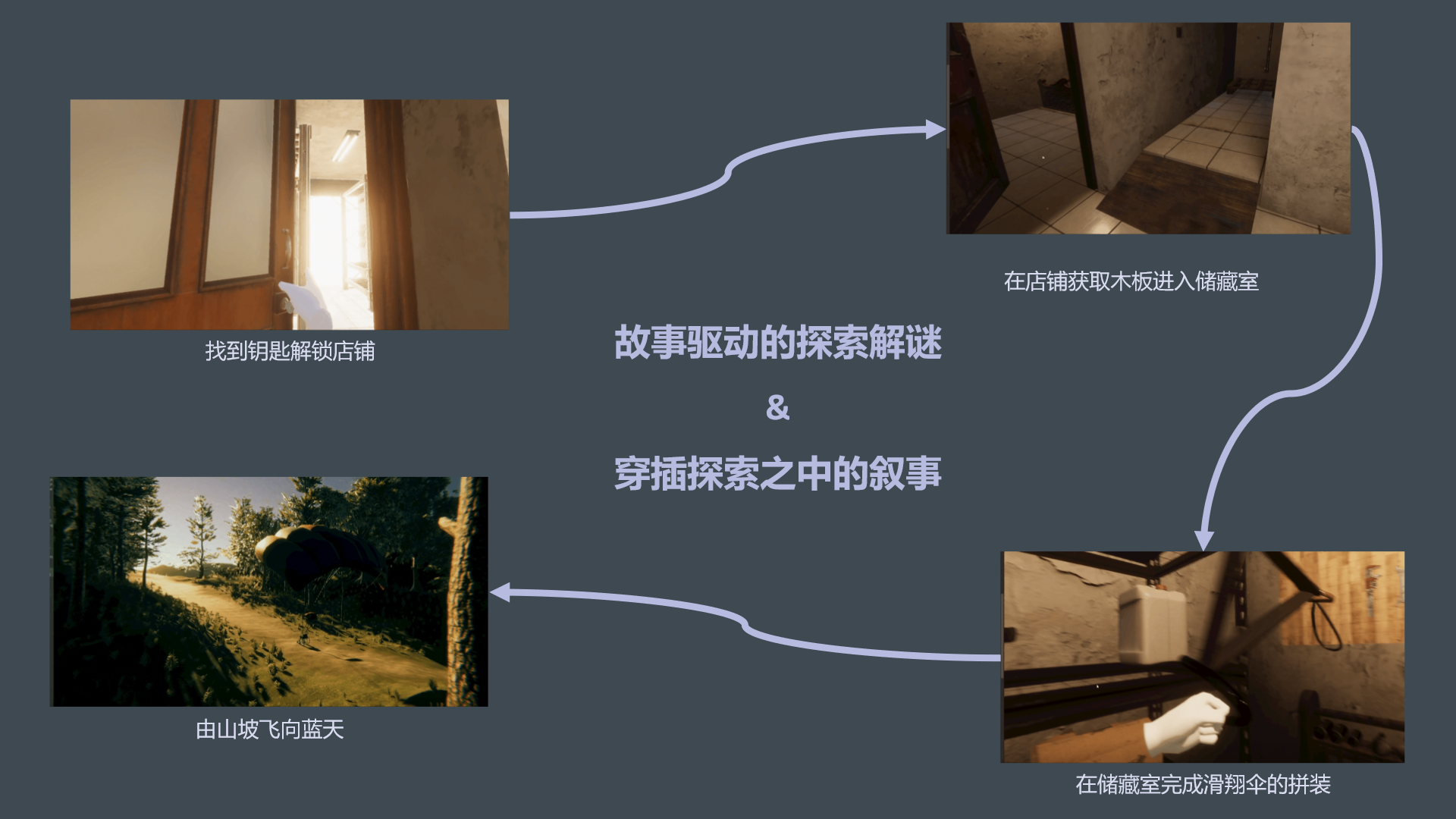
Puzzle & Story Design
Story-driven exploration | Puzzle solving | Narrative interspersed with exploration
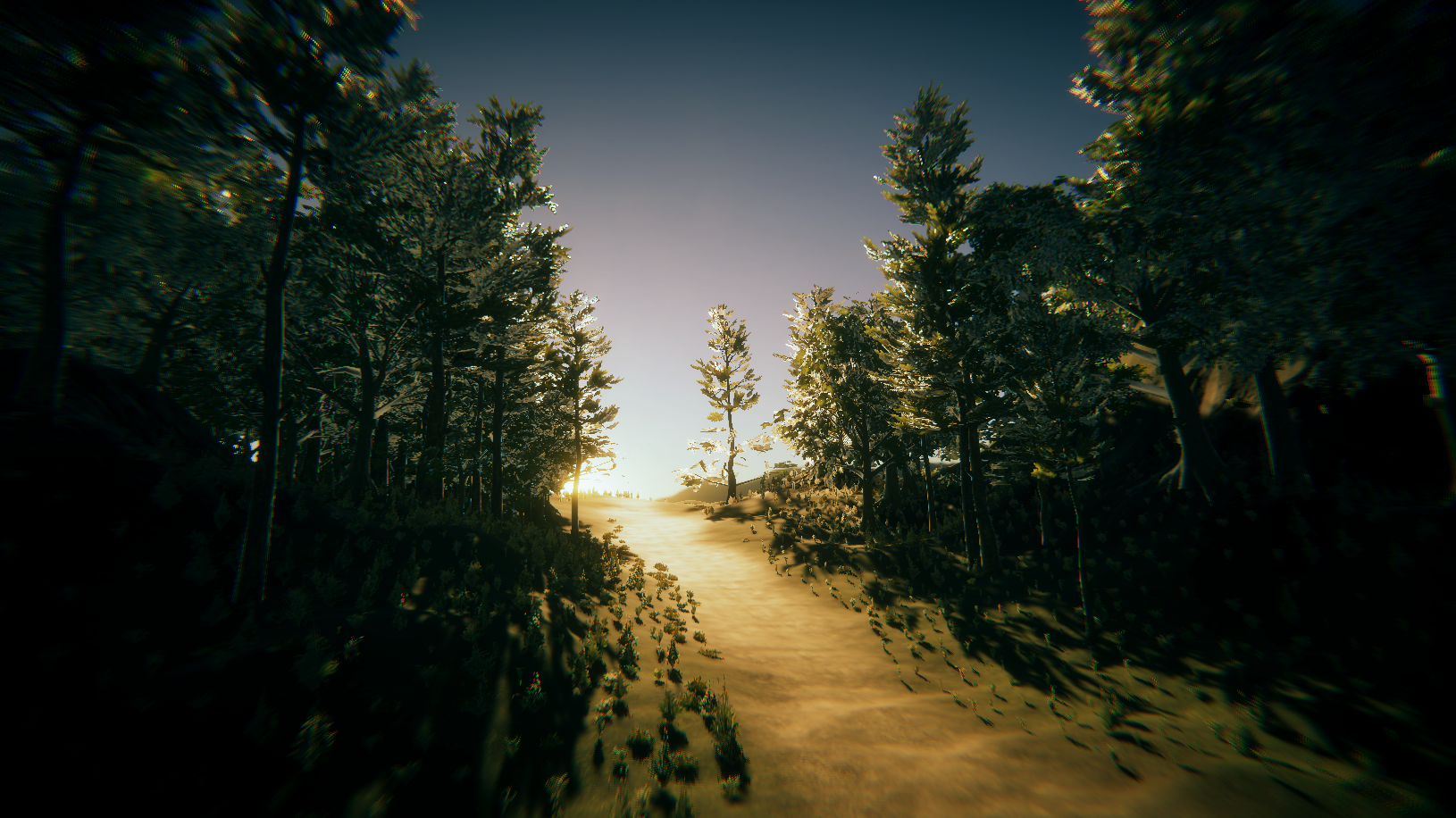
WOW Factor
We try to improve the player's experience from multiple perspectives
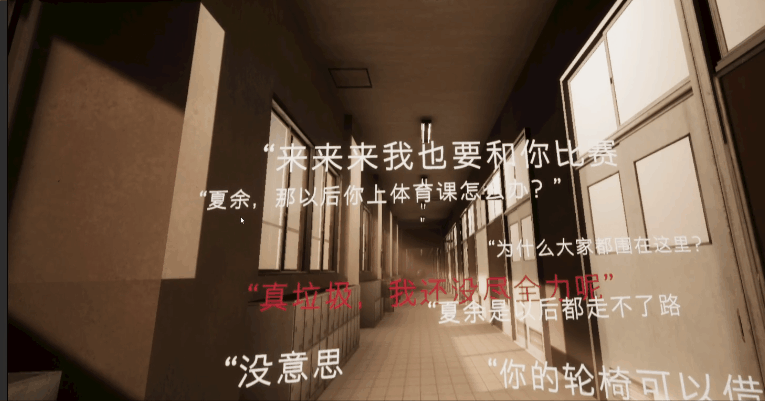
Caption Design
We hope that the player can learn the plot of the story from the interactive elements in the scene, the text information on the objects and the narration of the protagonist.
Vivid animation
Players may trigger animations in the scene at any time, and these animations are often associated with the plot. We hope that through these animations, players will feel "Oh! I am really interacting with objects in the scene!"
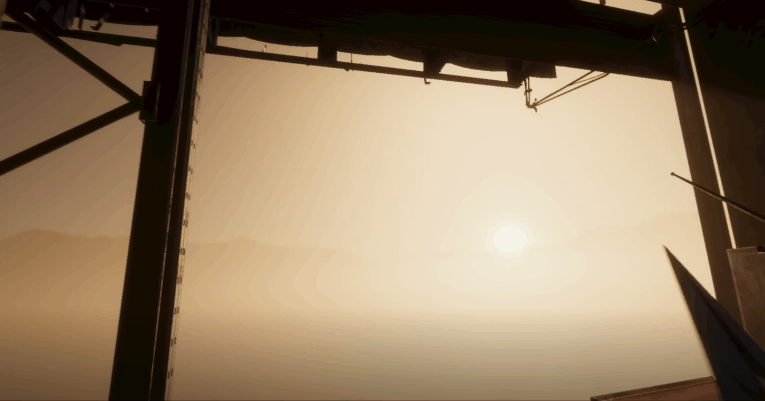
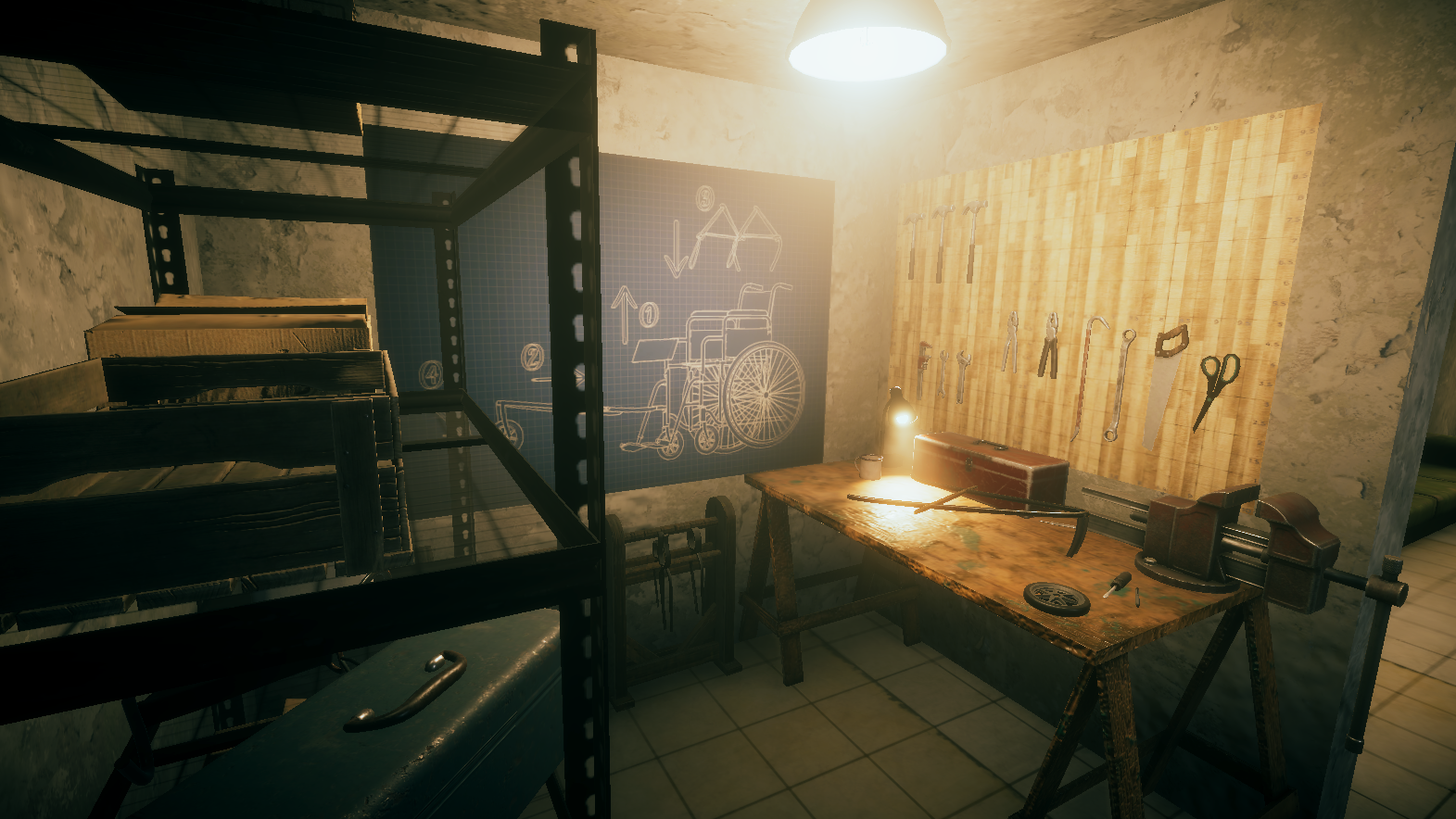
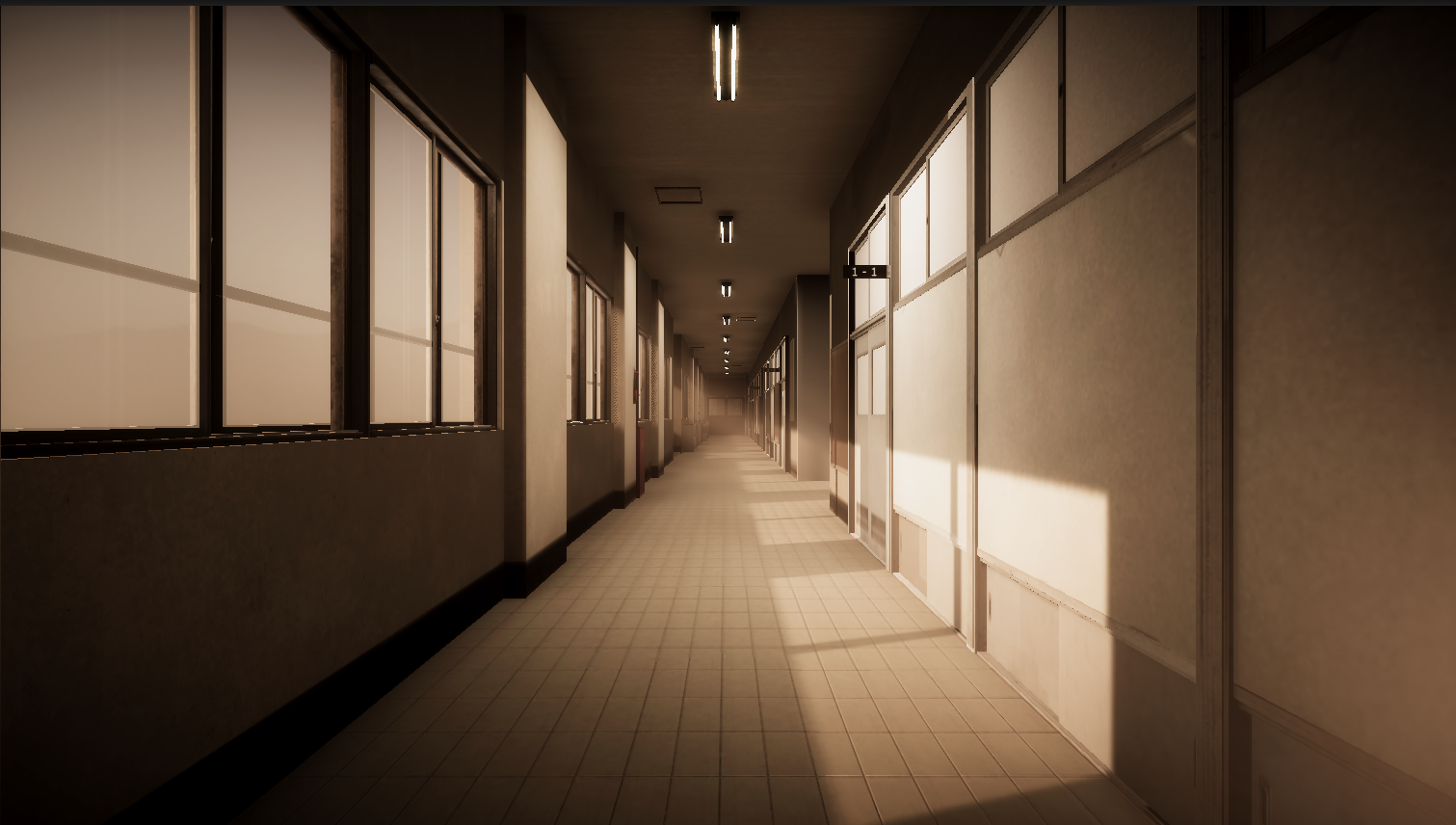
Technical Art
Ray Marching method to achieve real-time rendering of volume light
Volumetric Lighting, also known as "God Ray",
is a technology that simulates the Tyndall effect in computer graphics and is widely used in 3D games.
For each pixel on the screen, we launch a ray with the camera position as the starting point.
The ray travels iteratively at a certain step length and samples the light source once at this position, and detects whether the current ray is on the surface of the object, and adjusts the advancement range of the ray accordingly until it reaches the surface of the object.
The light intensity on each sampling point on the ray is summed to obtain the value of the pixel point,
and the light intensity on each sampling point is calculated according to the distance from the light source.
Reference
Gone Home | Halflife:Alyx